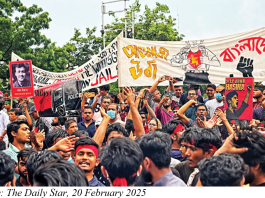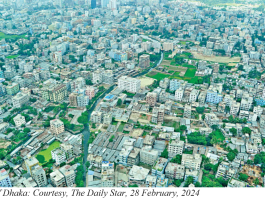Bangladesh today stands at a crossroads of unprecedented change. Once defined primarily by its struggles—poverty, cyclones, and political instability—the nation is now increasingly associated with resilience, ambition, and transformation. For the dummy election in 2024, the fallen autocratic Awami League Government adopted a slogan “Smart Bangladesh by 2041”.
Presented it as a vision, the autocrat promised to convert “Digital Bangladesh” to “Smart Bangladesh” by 2041 to claim its legitimacy. Being part of its false narrative of development, the so-called vision lacked a clear roadmap.
Our national development must rest on three interconnected pillars: green energy, skilled migration, and artificial intelligence (AI) with emerging technologies.
If Bangladesh can align its policies and partnership strategically, these three forces together have the potential to catapult the country into a globally competitive, sustainable, and knowledge-driven economy.
Green Energy: Powering a sustainable future
Energy lies at the heart of industrial growth and social progress. For Bangladesh, heavily dependent on imported fossil fuels, the shift towards renewable and green energy is both an economic necessity and an environmental obligation.
Solar power potential: With over 300 days of sunshine annually, Bangladesh is naturally 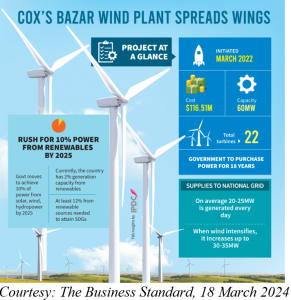 positioned to expand solar energy. From rooftop solar panels in urban centres to solar irrigation pumps in rural areas, the possibilities are vast. Initiatives such as the 200MW solar farms under development can transform the country’s energy mix.
positioned to expand solar energy. From rooftop solar panels in urban centres to solar irrigation pumps in rural areas, the possibilities are vast. Initiatives such as the 200MW solar farms under development can transform the country’s energy mix.
Wind and biomass: Coastal wind corridors and abundant agricultural residues provide additional renewable options. Harnessing these untapped resources can reduce reliance on imported coal and gas.
Regional partnerships: Collaborations with China, Australia, and Middle Eastern investors are critical. Joint ventures can bring financing, technical know-how, and modern infrastructure.
Transitioning to green energy will not only reduce carbon emissions but also create jobs in installation, maintenance, and research—connecting directly to the need for skilled workers.
Skilled migration: Bangladesh’s global workforce
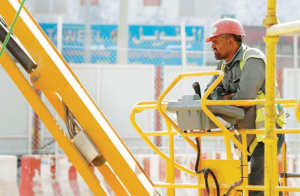 One of Bangladesh’s strongest assets is its people. Every year, millions of Bangladeshis migrate to the Middle East, Southeast Asia, Europe, and Australia in search of work. Remittances—over US$ 20 billion annually—are a lifeline for the national economy. But the challenge now is upskilling this workforce to meet the demands of the future.
One of Bangladesh’s strongest assets is its people. Every year, millions of Bangladeshis migrate to the Middle East, Southeast Asia, Europe, and Australia in search of work. Remittances—over US$ 20 billion annually—are a lifeline for the national economy. But the challenge now is upskilling this workforce to meet the demands of the future.
Beyond low-skilled jobs: For decades, Bangladeshi workers have been concentrated in construction, domestic work, and agriculture. While important, these sectors are often low-paid and insecure. The future demands skilled workers—engineers, healthcare professionals, IT specialists, and technicians.
Australia’s skilled migration pathways: With labour shortages in trades, healthcare, and engineering, Australia offers vast opportunities for Bangladeshis who meet global standards. Recognised Prior Learning (RPL), vocational training, and certification alignment are essential to ensure Bangladeshi workers remain competitive.
Brain gain, not brain drain: Skilled migration does not have to mean permanent loss. With proper government policies, skilled diaspora members can be linked back to Bangladesh through knowledge-sharing, investment networks, and technology transfer.
In a world of shifting demographics, where many developed nations face aging populations, Bangladesh’s youthful workforce can become one of its most powerful exports—if empowered with the right skills.
Artificial intelligence & technology: The smart Bangladesh vision
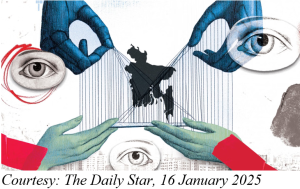 The AI revolution is not a distant future—it is here and accelerating. From healthcare and finance to agriculture and governance, AI is reshaping every sector. For Bangladesh, the challenge is to adopt without being left behind.
The AI revolution is not a distant future—it is here and accelerating. From healthcare and finance to agriculture and governance, AI is reshaping every sector. For Bangladesh, the challenge is to adopt without being left behind.
AI in agriculture: Smart drones, soil sensors, and AI-driven weather forecasting can drastically improve yields, reduce waste, and make farming more climate resilient. With agriculture employing nearly 40 per cent of the population, this is a game-changer.
AI in industry: Automation and robotics in garment manufacturing—Bangladesh’s export lifeline—can boost efficiency, but also require reskilling workers to avoid displacement.
AI in healthcare: With limited doctors per capita, AI diagnostic tools and telemedicine can bridge the gap, bringing affordable healthcare to remote areas.
AI Governance: Digital ID systems, smart city planning, and automated public services can increase transparency, reduce corruption, and improve citizen experience.
Partnerships with global tech leaders, academic institutions, and the Bangladeshi diaspora in Silicon Valley or Sydney can accelerate this transformation.
The interconnection of green Energy, skilled migration &AI
These three pillars—green energy, skilled migration, and AI—are not isolated silos. They reinforce each other in a cycle of innovation and progress:
- Green energy projects create demand for skilled engineers, technicians, and project managers.
- Skilled migration pathways enable Bangladeshis to acquire global expertise and bring it back home through remittances and knowledge transfer.
- AI and emerging technologies enhance the efficiency of both renewable energy systems and workforce development, ensuring Bangladesh keeps pace with global innovation.
Together, they represent a holistic development model—sustainable, inclusive, and globally connected.
Challenges ahead
Of course, the road ahead is not without challenges:
- Policy and regulation: Bangladesh must create clear, long-term policies for renewable energy, migration, and AI governance.
- Corruption and bureaucracy: Efficiency in implementation is just as important as visionary plans.
- Equity and inclusion: Ensuring rural populations, women, and marginalized groups are not excluded from opportunities.
- Education system overhaul: Traditional rote learning must give way to critical thinking, digital literacy, and hands-on skills training.
A vision for Smart Bangladesh
Bangladesh should envision itself as a “Smart Nation”—digitally empowered, economically strong, and socially inclusive. If green energy lights its homes, if skilled migrants bring back knowledge and prosperity, and if AI strengthens governance and innovation, Bangladesh can not only meet its development goals but also emerge as a leader among developing nations.
The story of Bangladesh has always been one of resilience. From the struggle for independence in 1971 to its rise as one of the fastest-growing economies in Asia, the nation has shown the ability to reinvent itself. The next reinvention—through future-driven innovation—may be its most remarkable yet.
Conclusion
The future of Bangladesh depends on choices made today. Green energy can secure sustainability, skilled migration can ensure global competitiveness, and AI with technology can leapfrog Bangladesh into the future. But none of this will happen automatically. It requires vision, commitment, and above all, the belief that Bangladeshis—at home and abroad—can shape a better tomorrow together. The forthcoming years are not merely about surviving global changes; they are about leading them. Bangladesh has the talent, the ambition, and the resilience. The time to act is now.

Alamgir Islam
Alamgir Islam, Sydney-based entrepreneur and director, specializes in international trade, skilled migration, and sustainable development. With extensive experience in cross-border partnerships and government liaison, he advocates for green energy adoption and knowledge transfer. His professional focus lies in fostering innovation and building global networks to advance Bangladesh’s economic aspirations.

